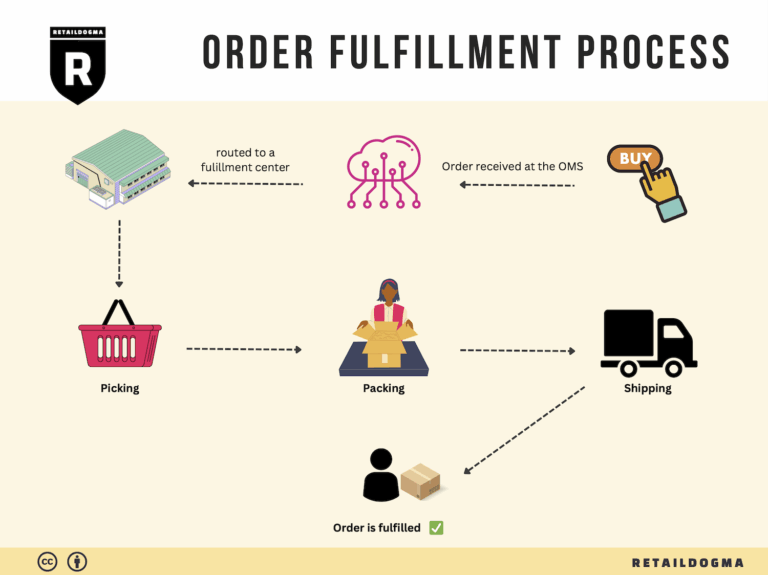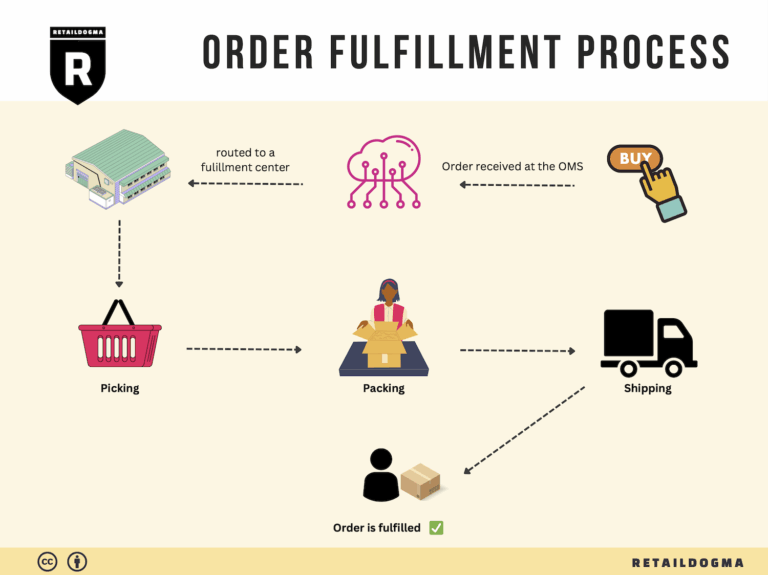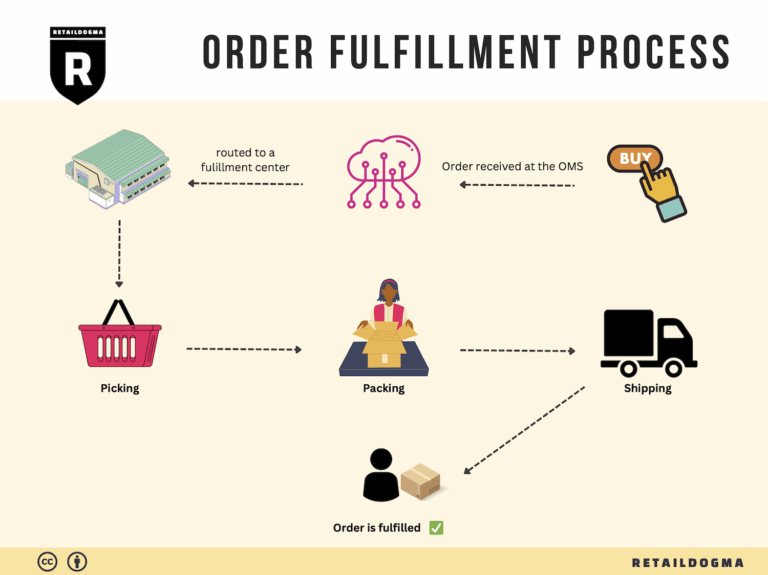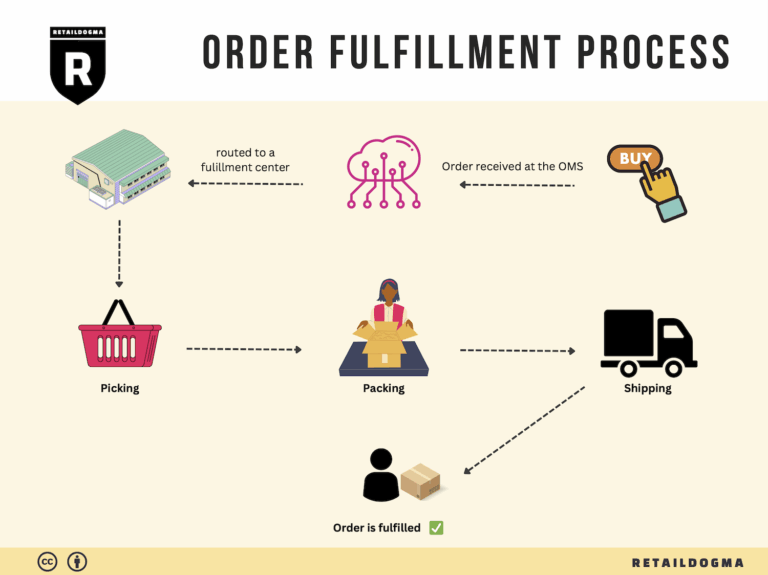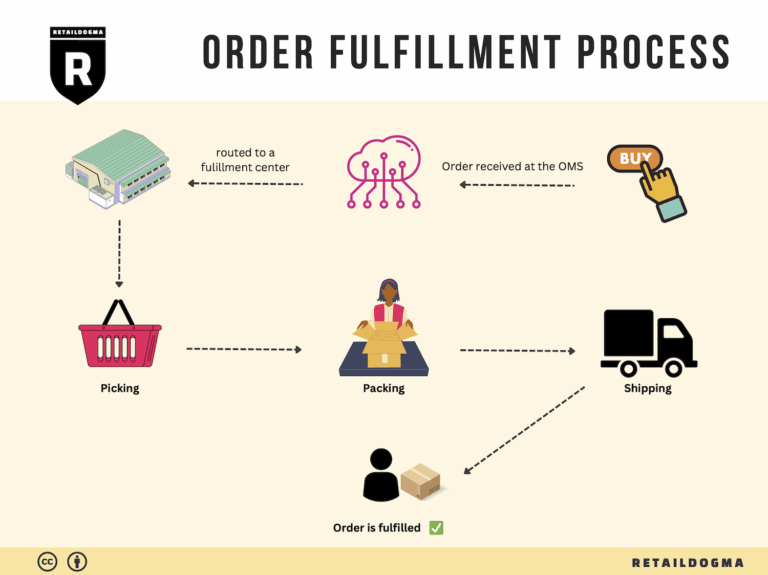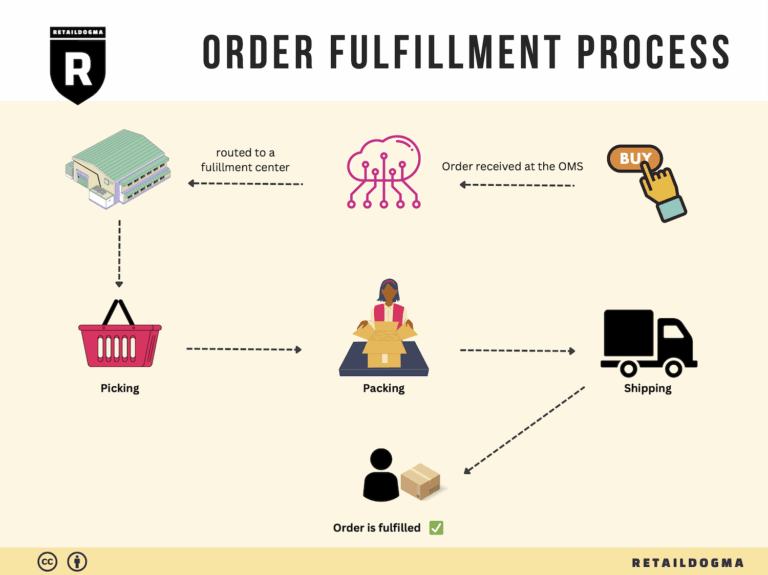Ecommerce Fulfillment Services: The Ultimate Guide (2025)
What is E-commerce Fulfillment? An Introduction for Growing Businesses
Understanding E-commerce Fulfillment: A Key to Your Business Success
As an e-commerce business owner, you may find yourself overwhelmed with the complexities of packing and shipping orders. Managing the logistics of order fulfillment can quickly become a daunting task, consuming valuable time and resources that could be better spent on growth strategies. The process of fulfillment is simply defined as getting a product from your warehouse or fulfillment center to the customer’s doorstep. However, this seemingly straightforward task encompasses a multitude of steps, including inventory management, order processing, packing, shipping, and handling returns.
In today’s competitive landscape, customers expect quick and reliable delivery. In fact, studies show that 90% of shoppers anticipate two- or three-day shipping, while a significant portion even expects same-day delivery. Failing to meet these expectations can lead to lost sales and unhappy customers, making efficient fulfillment crucial for sustaining growth.
This guide aims to demystify the world of e-commerce fulfillment and empower you to make informed decisions about your logistics. We will explore various fulfillment models, such as third-party logistics (3PL) and Fulfillment by Amazon (FBA), detailing the core services each offers. Understanding these models is essential for selecting the right approach for your business needs.
Additionally, we will provide insights into how to choose the right fulfillment partner. Factors such as operational efficiency, customer service, scalability, and cost-effectiveness will be addressed to help you identify a provider that aligns with your business objectives. Pricing structures will also be examined, ensuring you have a clear understanding of the costs associated with different fulfillment options.
Ultimately, our goal is to equip you with the knowledge and tools necessary to streamline your fulfillment processes. By optimizing your logistics, you can focus on scaling your sales and enhancing customer satisfaction. Join us as we explore the essential components of e-commerce fulfillment, setting you on a path toward operational excellence and business growth.
What You’ll Learn In This Guide
- What is E-commerce Fulfillment? An Introduction for Growing Businesses
- The Order Fulfillment Process: From ‘Buy’ Button to Customer’s Door
- Comparing Fulfillment Models: In-House vs. 3PL vs. Dropshipping
- A Deep Dive into Amazon FBA: Pros, Cons, and Who It’s For
- Core Services Offered by Fulfillment Centers
- How to Choose a Fulfillment Partner: A 6-Point Checklist
- Understanding Fulfillment Pricing: A Breakdown of Common Fees
- Frequently Asked Questions (FAQs) about Fulfillment
- Conclusion: Is Outsourcing Fulfillment the Right Move for Your Business?
- Important Disclaimer
The Order Fulfillment Process: From ‘Buy’ Button to Customer’s Door
1. Receiving Inventory
The order fulfillment process begins with receiving inventory. This step involves the acceptance of goods from suppliers or manufacturers into the fulfillment center. Upon arrival, items are checked against purchase orders to ensure accuracy in quantity and quality. This process typically includes scanning barcodes or SKUs (Stock Keeping Units) to systematically log the inventory into the warehouse management system (WMS).
Importance: Accurate receiving is crucial as it lays the foundation for the entire fulfillment process. Any discrepancies at this stage can lead to inventory shortages or excesses, which can impact order fulfillment and customer satisfaction. A reliable receiving process helps mitigate these risks, ensuring that the right products are available when orders are placed.
Key Term: SKU – A unique identifier for each product that streamlines inventory tracking and management.
2. Warehouse Storage
Once inventory is received and verified, it moves to the warehouse storage phase. In this step, products are organized and stored in designated locations within the fulfillment center. Efficient storage systems utilize shelving, bins, or pallets to optimize space and facilitate easy access. The layout of the warehouse is often designed to enhance picking efficiency by positioning fast-moving items closer to packing stations.
Importance: Effective warehouse storage is essential for maximizing space and ensuring quick access to products. Proper organization reduces the time required to locate items during the picking process, ultimately speeding up the overall order fulfillment timeline. This is particularly important for e-commerce businesses that thrive on fast delivery to meet customer expectations.
Key Term: FIFO (First In, First Out) – A common inventory management practice where the oldest stock is picked first to minimize the risk of obsolescence or spoilage.

3. Order Picking
The next step is order picking, where items are selected from their storage locations to fulfill customer orders. Warehouse staff or automated systems utilize pick lists, which detail the items and quantities needed for each order. This process may involve various methods, including single order picking, batch picking, or wave picking, depending on the volume and complexity of the orders.
Importance: Efficient order picking is vital for maintaining high accuracy rates and ensuring that customers receive the correct items. Delays or errors during this phase can lead to customer dissatisfaction and increased return rates. By implementing optimized picking strategies, businesses can enhance operational efficiency and improve overall fulfillment speed.
Key Term: Pick List – A document or digital tool that guides warehouse staff in selecting the correct items for each order.
4. Order Packing
After items are picked, they proceed to the order packing stage. Here, products are securely packaged for shipment. This process involves checking the picked items against the order details, adding packing materials to protect the products, and labeling the packages with shipping information. Many fulfillment centers also offer customized packaging options to enhance branding.
Importance: Proper packing is critical for ensuring that products arrive at customers’ doors in perfect condition. It also plays a role in the overall customer experience; well-packed orders convey professionalism and care. Moreover, efficient packing processes can help minimize shipping costs by optimizing package sizes and reducing dimensional weight.
Key Term: Dimensional Weight – A pricing technique used by shipping carriers that considers the size of the package in addition to its actual weight, influencing shipping costs.
5. Shipping & Delivery
The final step in the order fulfillment process is shipping and delivery. Once packages are packed, they are handed over to shipping carriers for delivery to the customer. This phase includes generating shipping labels, selecting the appropriate carrier based on cost and delivery speed, and tracking shipments to ensure timely delivery.
Importance: Shipping and delivery are often the most visible aspects of the fulfillment process to customers. Timely and accurate deliveries significantly impact customer satisfaction and retention. In today’s competitive e-commerce landscape, businesses must meet or exceed customer expectations for delivery speed, especially as many consumers now expect two-day or even same-day shipping.
Key Term: Last-Mile Delivery – The final step of the delivery process where the package is transported from a distribution center to the end customer, often considered the most critical and costly part of the shipping process.
By understanding and optimizing each of these five steps in the order fulfillment process, e-commerce businesses can enhance their operational efficiency, reduce costs, and ultimately improve customer satisfaction, paving the way for scalable growth.
Comparing Fulfillment Models: In-House vs. 3PL vs. Dropshipping
Fulfillment Model Comparison Table
| Model | Who Handles Inventory | Best For (Business Stage) | Key Advantage | Key Disadvantage |
|---|---|---|---|---|
| In-House Fulfillment | Business Owner | Startups, Small Businesses | Full control over operations | High overhead and operational complexity |
| Third-Party Logistics (3PL) | 3PL Provider | Growing Businesses | Scalability and expertise | Less control and potential hidden costs |
| Dropshipping | Supplier | New Entrepreneurs | Low startup costs and no inventory risk | Lower profit margins and dependency on suppliers |
In-House Fulfillment
In-house fulfillment refers to managing the entire fulfillment process within your own organization. This model is often favored by startups and small businesses that want complete control over their inventory and shipping operations. By handling fulfillment in-house, businesses can closely monitor quality, manage customer interactions directly, and tailor their processes to fit specific needs. This level of control can lead to enhanced customer satisfaction as businesses can ensure timely and accurate order deliveries. However, the key downside is the high overhead costs associated with warehousing, staffing, and technology investments required to run an efficient fulfillment operation. Additionally, as order volumes grow, the complexity of operations can increase significantly, leading to potential challenges in scaling the business.
Third-Party Logistics (3PL)
Third-party logistics (3PL) providers offer a solution for businesses looking to outsource their fulfillment processes. This model is particularly well-suited for growing businesses that require flexibility and scalability. 3PLs handle everything from inventory management to shipping, allowing business owners to focus on core activities like marketing and product development. The expertise that 3PL providers bring can streamline operations and improve order accuracy, which is crucial for customer satisfaction. Many 3PLs also have strategic warehouse locations that enable faster shipping times, which is increasingly important in today’s e-commerce landscape where consumers expect quick delivery. However, outsourcing fulfillment means relinquishing some control over the process, and businesses may encounter hidden costs or inconsistencies in service quality if they do not choose a reliable provider.
Dropshipping
Dropshipping is a fulfillment model where the retailer does not keep products in stock. Instead, when a customer places an order, the retailer purchases the item from a third-party supplier who then ships it directly to the customer. This model is particularly appealing to new entrepreneurs or those testing a business idea, as it requires minimal upfront investment and eliminates the risks associated with holding inventory. The low startup costs make it an attractive option for those looking to enter the e-commerce space without significant financial commitments. However, dropshipping comes with its own set of challenges. Retailers often face lower profit margins since they are reliant on suppliers for pricing and shipping. Moreover, issues such as stock shortages, shipping delays, or product quality concerns can lead to customer dissatisfaction, which could harm the retailer’s brand reputation. As a result, maintaining strong relationships with reliable suppliers is crucial in this model.
Conclusion
Choosing the right fulfillment model is a pivotal decision for e-commerce businesses aiming to scale. Each model offers distinct advantages and disadvantages that can significantly impact operational efficiency, customer satisfaction, and overall business growth. In-house fulfillment provides control but can be resource-intensive, while 3PLs offer expertise and scalability at the cost of some control. Dropshipping presents a low-risk entry point but may lead to challenges in customer experience. By carefully assessing your business stage, resources, and long-term goals, you can select the fulfillment model that best aligns with your operational strategy and customer expectations.
A Deep Dive into Amazon FBA: Pros, Cons, and Who It’s For
Understanding Fulfillment by Amazon (FBA)
Fulfillment by Amazon (FBA) is a service offered by Amazon that allows e-commerce sellers to store their products in Amazon’s fulfillment centers. Amazon then takes care of storage, packaging, shipping, and customer service for these products. This service has gained immense popularity among sellers due to its potential to increase sales while streamlining operations. Let’s delve into how FBA works and examine its advantages and disadvantages.
How FBA Works
-
Product Listing: Sellers begin by listing their products on the Amazon marketplace. They can choose to sell new, used, or refurbished items.
-
Shipping to Amazon: Once a seller’s products are listed, they ship their inventory to Amazon’s fulfillment centers. Amazon has numerous centers across various locations, which helps in optimizing shipping times.
-
Storage and Management: Amazon stores the seller’s products until they are sold. The seller can monitor inventory levels through their Amazon Seller Central dashboard.
-
Order Fulfillment: When a customer places an order for a product, Amazon picks, packs, and ships the item on behalf of the seller. This process ensures quick delivery, as Amazon often utilizes its Prime shipping services.
-
Customer Service: Amazon handles all customer inquiries, returns, and refunds related to FBA orders, allowing sellers to focus on other aspects of their business.
-
Sales Reporting: Sellers can track their sales performance, inventory levels, and other metrics through Amazon Seller Central, providing insight into their business operations.
Pros of Using FBA
-
Prime Eligibility: Products fulfilled by Amazon are automatically eligible for Amazon Prime, which can significantly increase visibility and sales. Prime members often prefer to purchase items that offer fast shipping, and being part of this program can enhance a seller’s competitive edge.
-
Customer Trust: Amazon is a well-established brand with a reputation for customer service. By using FBA, sellers benefit from the trust that customers have in Amazon, potentially leading to higher conversion rates.
-
Multi-Channel Fulfillment: FBA allows sellers to fulfill orders from other sales channels (e.g., their own website or other marketplaces) using Amazon’s fulfillment network. This capability can streamline operations and provide consistency in shipping and handling.
-
Scalability: FBA enables sellers to scale their business without the need for significant investment in logistics infrastructure. As demand increases, sellers can simply send more inventory to Amazon’s fulfillment centers.
-
Time Savings: By outsourcing logistics to Amazon, sellers can save valuable time that can be redirected toward marketing, product development, or other business-critical activities.
-
Global Reach: With FBA, sellers can reach customers in international markets, leveraging Amazon’s extensive global infrastructure.
Cons of Using FBA
-
High Fees: While FBA can simplify logistics, it comes with costs that can eat into profit margins. These fees include storage fees, fulfillment fees, and additional charges for long-term storage, which can accumulate if products don’t sell quickly.
-
Strict Inventory Rules: Amazon has specific inventory management rules, including limits on how much inventory can be sent to their warehouses. Sellers must adhere to these guidelines, which can be challenging for those with fluctuating demand.
-
Commingling Risks: FBA employs a commingling system where products from different sellers may be stored together. This can lead to issues if customers receive the wrong product or if inventory is lost or damaged, potentially impacting a seller’s reputation.
-
Loss of Control: When using FBA, sellers relinquish a degree of control over their inventory and customer interactions. This can be concerning for businesses that prioritize direct customer engagement and personalized service.
-
Dependence on Amazon: Relying heavily on FBA can make sellers vulnerable to changes in Amazon’s policies, pricing structures, or platform algorithms. Any significant alteration could impact sales and profitability.
Who is FBA Best For?
Fulfillment by Amazon is particularly advantageous for certain types of businesses:
-
Small to Medium-Sized Sellers: Those who may not have the resources to invest in their own fulfillment infrastructure can benefit significantly from FBA, allowing them to compete on a larger scale without upfront logistics costs.
-
High-Volume Sellers: Businesses with high sales volumes can leverage Amazon’s extensive fulfillment network to ensure timely delivery and customer satisfaction.
-
Brands Seeking Visibility: Sellers looking to enhance their brand presence and reach a wider audience will find value in FBA’s Prime eligibility and the trust associated with Amazon.
-
Multi-Channel Retailers: Businesses that sell across multiple platforms and want a streamlined fulfillment process will benefit from FBA’s multi-channel capabilities.
In conclusion, Fulfillment by Amazon can be a powerful tool for e-commerce businesses seeking to scale efficiently. However, sellers must weigh the pros and cons carefully to determine if it aligns with their operational goals and business model. By understanding how FBA works and its implications, business owners can make informed decisions that drive growth and customer satisfaction.
Core Services Offered by Fulfillment Centers
Inventory Management & Warehousing
Inventory management and warehousing form the backbone of efficient fulfillment operations. Fulfillment centers provide businesses with strategically located warehouses that streamline the storage and management of products. This service involves tracking inventory levels, monitoring stock movements, and ensuring that products are stored under optimal conditions.
Benefits to E-commerce Businesses:
1. Real-Time Inventory Tracking: Fulfillment centers employ advanced inventory management systems that allow businesses to monitor stock levels in real-time. This reduces the risk of stockouts and overstock situations, enabling more accurate sales forecasting.
-
Optimized Storage Solutions: By utilizing a fulfillment center, e-commerce businesses can benefit from optimized storage solutions tailored to their product types. This can lead to reduced warehousing costs and improved operational efficiency.
-
Scalability: As businesses grow, their inventory needs can change significantly. Fulfillment centers allow for easy scalability, enabling businesses to adjust their storage space based on seasonal demands or rapid growth without the burden of managing additional warehouse leases.
-
Reduced Operational Complexity: Outsourcing inventory management to a fulfillment center means that e-commerce businesses can focus on core activities such as marketing and customer service, rather than the intricacies of warehouse operations.
Pick and Pack Services
Pick and pack services are crucial for ensuring that orders are fulfilled accurately and efficiently. This process involves selecting the correct items from the warehouse (picking) and then packaging them appropriately for shipment (packing). Fulfillment centers typically employ sophisticated systems to minimize errors in this phase.
Benefits to E-commerce Businesses:
1. Increased Order Accuracy: Fulfillment centers often utilize barcoding and scanning technologies during the pick and pack process, significantly reducing human error. This leads to higher order accuracy, which is vital for maintaining customer satisfaction.
-
Faster Order Processing: By leveraging streamlined pick and pack operations, fulfillment centers can expedite the order fulfillment process. Many centers offer same-day shipping, which is increasingly expected by consumers in today’s fast-paced market.
-
Customized Packaging Options: Many fulfillment centers provide customizable packaging solutions that allow e-commerce businesses to enhance their branding. This can include branded boxes, custom inserts, and eco-friendly packaging materials.
-
Cost Efficiency: Outsourcing pick and pack services can be more cost-effective than handling these operations in-house, especially for businesses that may not have the infrastructure to support efficient fulfillment processes.
Kitting and Assembly
Kitting and assembly services involve combining multiple products into a single package or preparing items for shipment as a cohesive unit. This can include creating subscription boxes, gift sets, or promotional bundles. Fulfillment centers can manage this process efficiently, allowing businesses to offer more complex product offerings without additional labor costs.
Benefits to E-commerce Businesses:
1. Enhanced Product Offerings: Kitting allows businesses to create unique product combinations that can appeal to specific customer segments. This can lead to increased sales and higher average order values.
-
Time Savings: By outsourcing kitting and assembly tasks, e-commerce businesses can save valuable time and labor costs. This enables teams to focus on strategic initiatives like marketing, product development, and customer engagement.
-
Consistency and Quality Control: Fulfillment centers typically have established processes for kitting that ensure consistency in product assembly and presentation. This helps maintain high-quality standards, which are essential for customer satisfaction and brand reputation.
-
Flexible Options: Businesses can adapt their kitting strategies based on market trends or seasonal demands. This flexibility allows companies to quickly respond to consumer preferences without the need for extensive operational changes.
Returns Management (Reverse Logistics)
Returns management, or reverse logistics, is the process of handling returned goods efficiently. A robust returns management system is essential for e-commerce businesses, as it can significantly impact customer satisfaction and retention rates. Fulfillment centers often provide comprehensive returns management services that simplify this complex process.
Benefits to E-commerce Businesses:
1. Streamlined Returns Process: Fulfillment centers can manage the entire returns process, from processing return requests to restocking items. This reduces the administrative burden on e-commerce businesses and ensures that returns are handled quickly and efficiently.
-
Improved Customer Experience: A well-managed returns process enhances customer satisfaction. When customers know they can return items easily, they are more likely to make a purchase, knowing their risk is mitigated.
-
Data Insights: Fulfillment centers often provide analytics on returns, helping businesses understand why products are being returned. This data can be invaluable for improving product quality, customer service, and overall business strategy.
-
Cost Savings: By outsourcing returns management, businesses can save on labor costs and reduce the logistical challenges associated with handling returns in-house. This can lead to more efficient operations and improved bottom lines.
In conclusion, leveraging the core services offered by fulfillment centers can significantly enhance the operational efficiency of e-commerce businesses. From managing inventory to handling returns, these services provide the scalability and expertise needed to compete in today’s fast-paced market.
How to Choose a Fulfillment Partner: A 6-Point Checklist
Location & Warehouse Network
Importance:
The location of your fulfillment partner’s warehouses plays a crucial role in shipping efficiency and cost. A strategically placed network can minimize shipping times and reduce costs, which directly impacts customer satisfaction.
Questions to Ask:
1. Where are your fulfillment centers located, and how does that affect shipping times to my customer base?
2. Can you provide coverage maps that show delivery times to key regions?
3. How do you handle inventory distribution across multiple warehouses, if applicable?
Technology & Integrations
Importance:
Robust technology and seamless integrations with your e-commerce platforms (like Shopify, Amazon, etc.) are essential for real-time inventory management, order processing, and tracking. The right technology can streamline operations and enhance customer experience.
Questions to Ask:
1. What order management system do you use, and how does it integrate with my existing technology stack?
2. Can you provide real-time inventory updates and tracking for my customers?
3. How do you handle data security and compliance with privacy regulations?
Specializations (e.g., cold storage, oversized items)
Importance:
Not all fulfillment partners can handle specialized inventory. If your products require specific handling, such as cold storage for perishables or extra care for oversized items, choosing a partner with the right capabilities is essential.
Questions to Ask:
1. What types of specialized fulfillment services do you offer (e.g., cold storage, kitting, or oversized items)?
2. Can you provide examples of how you’ve successfully managed similar products for other clients?
3. What certifications or compliance measures do you have in place for handling specialized products?
Scalability & Capacity
Importance:
Your fulfillment partner should be able to grow with your business. Whether you’re scaling up for seasonal spikes or down during slower periods, a partner with flexible capacity can help you manage costs effectively.
Questions to Ask:
1. How do you handle peak seasons or sudden increases in order volume?
2. What is your maximum capacity for storage and order fulfillment?
3. How quickly can you scale operations up or down, and what processes are in place to manage this?
Pricing and Contracts
Importance:
Transparent pricing models and fair contracts are vital to avoid unexpected costs that can eat into your margins. Understanding the pricing structure will help you make informed decisions about your fulfillment expenses.
Questions to Ask:
1. Can you provide a detailed breakdown of your pricing structure, including any hidden fees?
2. What is your policy on minimum order requirements or setup fees?
3. Are there any penalties for early termination of the contract, and what is the contract length?
Customer Support & Reviews
Importance:
Exceptional customer support is essential for resolving issues quickly and maintaining smooth operations. Researching customer reviews and testimonials can provide insight into the partner’s reliability and service quality.
Questions to Ask:
1. What kind of customer support do you offer (e.g., dedicated account manager, 24/7 support)?
2. Can you provide case studies or testimonials from clients in my industry?
3. How do you handle fulfillment errors or customer complaints, and what is your process for resolution?
Conclusion
Choosing the right fulfillment partner is a pivotal decision that can significantly impact your e-commerce business’s success. By using this checklist, you can systematically evaluate potential partners to ensure they meet your operational needs, align with your business goals, and ultimately enhance customer satisfaction. Remember, the right partner is not just a service provider; they should be an extension of your team, working together to achieve your business objectives.
Understanding Fulfillment Pricing: A Breakdown of Common Fees
Initial Setup Fees
Initial setup fees are common in the fulfillment industry and typically cover the onboarding process when you first partner with a third-party logistics (3PL) provider. These fees may include costs associated with integrating your systems, setting up your inventory in the provider’s warehouse, and creating necessary documentation for order processing.
The calculation of these fees can vary significantly between providers. Some may charge a flat fee, while others may base it on the complexity of your setup, which could include the number of SKUs (Stock Keeping Units) you have and the level of customization needed for your fulfillment processes. It’s essential to clarify what is included in the setup fee and if any additional costs may arise during the onboarding phase.
Receiving Fees
Receiving fees are charged when your products arrive at the fulfillment center. These fees cover the labor and processes involved in unloading, inspecting, and storing your inventory.
Typically, receiving fees are calculated per shipment or per unit. Some 3PLs may charge a flat fee for every delivery, while others may charge based on the number of pallets or the total volume of the shipment. It’s crucial to understand if there are any minimums or additional charges for larger shipments, as these can impact your overall costs.
Storage Fees (per pallet/bin)
Storage fees are assessed for the space your inventory occupies within the fulfillment center. These fees can be charged on a per-pallet or per-bin basis, depending on how your products are stored.
The calculation of storage fees often considers factors such as:
- Duration of Storage: Most providers will charge monthly fees, but some may also have tiered pricing based on how long items are stored.
- Type of Inventory: Certain items may incur additional fees if they require special handling or storage conditions, such as temperature-controlled environments.
- Seasonal Adjustments: During peak seasons, such as holidays, storage fees might increase due to higher demand for space.
Understanding how storage fees are structured can help you optimize your inventory levels and minimize costs.
Pick & Pack Fees (per item/order)
Pick and pack fees are charged for the labor involved in selecting items from your inventory and packing them for shipment. This fee is typically calculated per item or per order, depending on the fulfillment provider’s pricing model.
Factors influencing pick and pack fees include:
- Number of Items: More items per order generally lead to higher fees, as it takes more time to pick and pack.
- Complexity of Packing: If your products require special packing materials, kitting, or assembly, additional charges may apply.
- Order Frequency: Some providers offer discounts for high-volume orders, so it’s worth discussing your average order size and frequency to negotiate better rates.
Shipping Fees
Shipping fees encompass the costs associated with transporting your products to customers. These fees can vary based on several factors, including the shipping method (ground, expedited, etc.), destination, and package weight.
Shipping fees are generally calculated based on:
- Dimensional Weight: Many carriers use dimensional weight pricing, which considers package size in addition to weight. Understanding this can help you optimize packaging to reduce shipping costs.
- Shipping Zones: Costs can differ based on the distance from the fulfillment center to the customer’s location. Shipping to zones that are further away will typically incur higher fees.
- Carrier Rates: Different carriers offer varying rates, so it’s beneficial to compare options and negotiate rates with your 3PL provider.
Tips for Getting an Accurate Quote
-
Be Transparent: Provide potential fulfillment partners with detailed information about your products, order volume, and any special handling requirements. This transparency helps ensure that quotes are as accurate as possible.
-
Ask for Itemized Quotes: Request detailed breakdowns of all fees, including initial setup, receiving, storage, pick and pack, and shipping fees. This clarity will help you understand the total cost structure.
-
Consider Volume Discounts: Inquire about discounts for higher order volumes or long-term contracts, as many providers offer incentives for loyalty and commitment.
-
Evaluate Additional Services: If you require extra services like returns management or custom packaging, ensure these are included in the quote to avoid unexpected costs later.
-
Review Contract Terms: Before signing, carefully review the contract for any hidden fees or terms that could affect pricing over time, such as seasonal adjustments or minimum order quantities.
By understanding these common fees and following the tips provided, you can make informed decisions when selecting a national fulfillment service that aligns with your business goals and budget.
Frequently Asked Questions (FAQs) about Fulfillment
1. What is a national fulfillment service?
National fulfillment services are third-party logistics (3PL) providers that specialize in managing the storage, packaging, and shipping of products for e-commerce businesses across a wide geographic area. These services enable businesses to efficiently manage their supply chain and logistics, ensuring that customer orders are processed and delivered quickly and accurately.
2. How does a fulfillment center differ from a warehouse?
A fulfillment center is specifically designed for the processing of orders and shipping directly to customers, while a warehouse primarily serves as a storage facility for inventory. Fulfillment centers focus on order picking, packing, and shipping, often incorporating advanced technology and systems to manage inventory and streamline operations.
3. What is a 3PL (Third-Party Logistics) provider?
A 3PL provider is a company that offers outsourced logistics services, including warehousing, inventory management, order fulfillment, and transportation. By partnering with a 3PL, businesses can leverage the provider’s expertise, technology, and infrastructure to enhance their logistics operations and focus on core business activities.
4. How much do fulfillment services cost?
The cost of fulfillment services can vary widely based on factors such as order volume, product type, storage needs, and additional services required (e.g., kitting, custom packaging). Typically, fulfillment providers charge fees based on storage space, pick and pack services, shipping costs, and any other specialized services. It’s essential to request detailed quotes from potential providers to understand the full scope of costs.
5. What are the benefits of using national fulfillment services?
Using national fulfillment services can provide numerous benefits, including:
– Faster Shipping: Most national fulfillment centers are strategically located to ensure quick delivery across vast regions.
– Scalability: Businesses can easily adjust their logistics operations based on demand fluctuations without investing in additional infrastructure.
– Cost Savings: Outsourcing fulfillment can reduce overhead costs associated with maintaining in-house warehouses and staffing.
– Improved Customer Satisfaction: Reliable and timely order fulfillment can enhance customer experiences and loyalty.
6. How can national fulfillment services help my business grow?
National fulfillment services can help your business grow by providing efficient order processing, reducing shipping times, and allowing you to focus on marketing and product development rather than logistics. By ensuring accurate and fast fulfillment, you can improve customer satisfaction, leading to repeat business and positive reviews, which can drive more sales.
7. What should I look for when choosing a fulfillment provider?
When selecting a fulfillment provider, consider the following criteria:
– Reputation and Experience: Look for a provider with a proven track record in the industry.
– Technology and Systems: Ensure they use advanced technology for inventory management and order tracking.
– Location: Choose a provider with strategically located fulfillment centers to minimize shipping times.
– Service Offerings: Assess whether they provide additional services like kitting, returns management, and custom packaging.
8. Can I manage my own inventory while using a fulfillment service?
Yes, many fulfillment services offer inventory management systems that allow you to track stock levels in real-time. This enables you to maintain oversight of your inventory while benefiting from the logistics expertise of your fulfillment provider. Regular communication with your provider will help ensure that your inventory levels are optimized.
9. How do fulfillment services handle returns?
Fulfillment services typically provide returns management solutions that streamline the process for both you and your customers. This can include issuing return labels, processing returned items, and updating inventory records. A well-managed returns process enhances customer satisfaction and can improve repeat purchases.
10. Is it possible to integrate fulfillment services with my existing e-commerce platform?
Yes, most national fulfillment services offer integrations with popular e-commerce platforms like Shopify, WooCommerce, and Amazon. These integrations facilitate seamless data transfer between your online store and the fulfillment provider, allowing for real-time inventory updates, order processing, and tracking information. Be sure to discuss integration capabilities when evaluating potential providers.
Conclusion: Is Outsourcing Fulfillment the Right Move for Your Business?
Evaluating the Benefits of Outsourcing Fulfillment
Outsourcing your fulfillment can be a transformative decision for your e-commerce business. By leveraging a national fulfillment service, you can significantly save time and focus your resources on strategic initiatives rather than the day-to-day logistics of order processing. This time-saving aspect is crucial for business owners and operations managers who are keen to drive growth and innovation.
Scalability is another compelling reason to consider fulfillment services. As your business grows, so do the complexities of inventory management and shipping logistics. A capable fulfillment partner allows you to scale your operations seamlessly, accommodating seasonal demand fluctuations and planned expansions without the burden of managing additional warehouse space or staff. This flexibility can be a game-changer in maintaining operational efficiency and customer satisfaction.
Moreover, the expertise that fulfillment providers bring to the table cannot be overstated. These companies specialize in logistics and have the experience to navigate the challenges associated with order fulfillment, from inventory planning to shipping accuracy. With their established processes and technology, they can help ensure that your orders are fulfilled correctly and on time, ultimately enhancing your brand’s reputation.
However, the choice of a fulfillment partner is critical. Not all services are created equal, and aligning with a provider that understands your unique business needs is essential for long-term success.
To determine if outsourcing fulfillment is the right move for your business, consider conducting an audit of your current shipping processes. Assess your pain points, customer feedback, and operational bottlenecks. This evaluation can provide clarity on whether partnering with a fulfillment service is the next strategic step in your growth journey. Take action today and explore how a fulfillment partner could elevate your business to new heights.
Important Disclaimer
⚠️ Important Disclaimer
The information in this guide is for educational purposes. Fulfillment services, pricing, and platform features change frequently. Always conduct your own due diligence and consult with providers directly before making business decisions.

